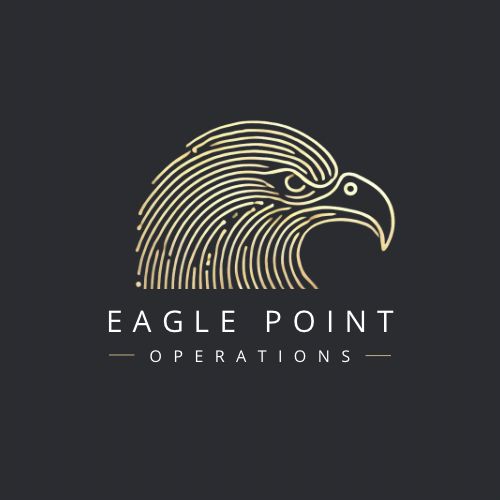The Rising Threat to Faith-Based and Cultural Institutions
- Eagle Point Operations

- Jun 20
- 4 min read
Across the world, a dangerous pattern is accelerating, and too many communities are still treating it like background noise. The rising threat to faith-based and cultural institutions is no longer limited to one group, Jewish institutions, schools, synagogues, and community centers are facing an undeniable spike in targeted threats. But it doesn’t stop there. Christian churches, cultural centers, and even unaffiliated nonprofits are being swept into a broader wave of ideological hostility, violent extremism, and coordinated targeting.
This isn’t a local problem. This is global, and it’s growing.

The Global Climate Has Shifted
What we’re witnessing is a fusion of geopolitical unrest, digital radicalization, and soft-target exploitation. The current war between Israel and Iran has not only redefined the battlefield in the Middle East, it has intensified global ideological divides and fueled a renewed wave of anti-Semitic rhetoric and anti-Western extremism.
From Europe to North America, Jewish communities are being warned to stay alert. Intelligence services across the globe have issued formal threat advisories. Surveillance has increased. Protests have grown more aggressive. Threats once confined to fringe actors are now spreading through encrypted networks, public discourse, and coordinated online campaigns.
But here’s the dangerous part: this isn’t just about Jewish organizations anymore. Institutions of culture, education, faith, and community, regardless of religion or affiliation, are increasingly being seen as symbolic targets in ideological and political conflicts they never chose to enter. Visibility, values, and perceived identity now make a wide range of organizations vulnerable in today’s volatile landscape.
Anti-Semitism Has Evolved And Expanded
Antisemitic threats have always existed. But today’s version is more emboldened, decentralized, and unpredictable. It isn’t confined to lone actors or hate groups. It includes online radicalization, foreign influence, ideological spillover from Middle Eastern conflicts, and opportunistic attackers looking for soft targets that generate maximum psychological impact.
Jewish preschools, high schools, community centers, museums, Holocaust memorials, and even kosher restaurants are now being monitored for suspicious activity. And yet, many of these institutions still rely on outdated procedures, visible deterrents, or overconfidence in being “too small” to be a target.
This mindset is exactly what attackers count on.
From Symbolism to Strategy
Why are faith-based and cultural institutions so attractive to those planning attacks?
Because these spaces combine several high-value factors:
Symbolism - They represent identity, belief, and heritage.
Visibility - Events, services, and public-facing programs provide accessible windows of opportunity.
Assumed vulnerability - Many institutions have open-door policies and community-oriented values, making them easier to infiltrate.
Media impact - Attacks on places of worship or cultural gathering generate strong emotional reactions, headlines, and global coverage.
Whether the attacker’s goal is ideological destruction, political messaging, or personal notoriety, the impact of such an incident is amplified when the target is deeply tied to identity.
The Expanding Web of Threats
It would be a mistake to view these threats through the lens of physical violence alone. Today’s attackers may use:
Social engineering to gain access through impersonation or manipulation.
Cyber attacks to disrupt operations or steal sensitive data on donors, students, or religious leaders.
Hybrid tactics, blending physical reconnaissance with digital tools such as surveillance apps, open-source intelligence, and card cloning.
More alarmingly, attackers are not necessarily acting in isolation. They often receive ideological support, digital resources, and indirect encouragement from online communities and geopolitical narratives.
And with the Israel-Iran conflict intensifying, ideological narratives are no longer regional, they are globalized, reactive, and emotionally charged. For radicalized individuals, symbolic attacks against faith-based or cultural institutions abroad are increasingly seen as a way to participate in global ideological conflicts.

Faith and Complacency: A Deadly Combination
Many leaders of schools, community centers, or houses of worship believe they’re not at risk because they:
Have good relationships with the community
Have a guard at the entrance or a camera system
Don’t believe their location would attract attention
But the attackers don’t care about your local relationships or your intentions. They care about opportunity, impact, and symbolic value.
Complacency is no longer an option.
A New Era of Security Thinking
Security is no longer just about locking doors or hiring a guard. It’s about awareness, profiling threats, evaluating exposure, and creating layered readiness. It’s about understanding what makes your environment attractive to an attacker, and how to shift that dynamic in your favor.
It’s also about understanding that while your community may value openness, attackers value predictability. And if you haven’t assessed your institution’s vulnerabilities from an adversary’s perspective, you’re operating with a dangerous blind spot.
This doesn’t mean becoming paranoid. It means becoming prepared.
What’s at Stake
An attack on a religious or cultural institution isn’t just a tragic event, it’s a psychological and symbolic blow to entire communities. It can destroy a sense of safety, deter participation, and fracture cohesion.
It can turn places of trust into places of trauma.
Every organization, no matter its size, has a responsibility to ask the hard question:
What are we doing to stay ahead of the threat?
Build Readiness Before You’re Tested
At Eagle Point Operations, we help organizations uncover their blind spots before attackers exploit them. Our team delivers professional risk assessments, strategic consulting, and training programs based on elite Israeli security and intelligence methods.
If your institution needs to think smarter, move faster, and build real readiness
now is the time to act.
Request a Discounted Risk Assessment - Get a Free Action Checklist Now.
Book your professional Risk Assessment at a special rate - and get an immediate checklist to start securing your site tomorrow.
*Limited-time offer for new clients only.




Comments